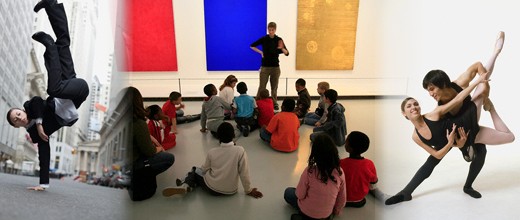Website sections:
Current section's content:
- You Can Manage and Program Creativity
- Creative Abilities and Creative Thinking Skills Management
- Briefly About CreativityModel Method Usage
- CreativityModel Method Usage Opportunities and End-User License Agreement
- Current Version of CreativityModel Method
- CreativityModel Method Abstract
- CreativityModel Method Version Changes
- CreativityModel Method Glossary
- Explanation of the Method's Component Parts and How the Component Parts Interact
- Explanation of How the Method's User Achieves Results
- CreativityModel Method - Generate Dots, Connect the Dots
- CreativityModel Method Usage Areas
- The Artist in You
- Growth of the Artist in You
- The Result Getter in You
- Applying the Result Getter in You
- About Choice Supported Creativity Usage
- The Problematic Side of Business Creativity
- Creativity Management and Business Creativity
- Sales CRM Software Development Example
- Why Does Creativity Management Matter and What Can You Do About This?
- Goal Oriented Creativity Management and CreativityModel Method
- Goal Oriented Creativity Management and Your Personal and Professional Life
- Teenager, Version 1 - Confusion
- Teenager, Version 2 - Career Development and Life Management
- Managers, Version 1 - Zigzagging Business Development
- Managers, Version 2 - Innovation Management and New Product and Service Development
- The President, Version 1 - Some of It Did Happen
- The President, Version 2 - Self-Expression, Conflict Resolution, Creativity and Leadership
- CreativityModel Method Development Background
- Further Development of CreativityModel Method




















Why Does Creativity Management Matter and What Can You Do About This?
Contents
- Why Does Creativity Management Matter?
- What You Can Do About This
Why Does Creativity Management Matter?
This article continues where the Sales CRM Software Development Example article left off.
Imagine now, that you and Max work for the same company. It is your company's revenue that is on the line here. It may very well be, that your personal income is also at least indirectly affected by this project's results.
Proceeding by using choice supported creativity in situations that require goal oriented creativity usage can derail projects.
Of course, this applies to all sorts of business and organizational projects, not only to sales software selection, that is used as an example here.
There are primarily two types of problem areas that result from this:
- Project's objectives are not being met.
- More resources are being spent than the company or organization can afford.
In some cases, resources are spent, but project's objectives are simply not achieved. As a result, customers are unhappy because their needs and wants are not being met.
In other cases, project moves in many different directions, without producing any usable results and in the end may produce mediocre results. In the process, way more resources are spent than the company or organization can afford. If we would graph such project's development steps, the result would look like a chain of zigzagging links, because the participants went in one direction for a while, and then in another direction, and so on.
Each such direction and its length mean usage of time, labor, and often other resources as well.
Such projects may go on and on without producing the necessary results, without the participants fully understanding what they are supposed to be doing and why. That tends to exhaust the participants emotionally, in addition to consuming more time and labor resources than is necessary. Most likely the same results could be used more productively elsewhere.
So, even when the negative effects are difficult to quantify, they result in lost opportunities.
Further, the problems that are described here can create on the organizational level ripple effects that either directly or indirectly affect very many persons professional lives.
In the case of sales software selection, we can make well educated guesses about the size of the losses. Add to this other projects that are managed in a similar manner and we may easily end up with a total amount that is double digit percentage of the company's annual sales.
That's a lot of money.
What does it mean to a company, if its revenue is lower by double digits than it could be? No salary increases, no bonuses, less investments, less shareholder value built, and layoffs, perhaps? Also, increased daily tension at work.
Hopefully, the sales software selection example helps to clarify the problems that result from using choice supported creativity in circumstances where goal oriented creativity is needed.
There are many different types of projects, small and large, in different companies and organizations, that do go on in a similar manner. The losses and negative effects may build on each other, causing additional damage.
What You Can Do About This
How can you make positive improvements in the areas that are described here?
First, you can train your own creativity management skills. Second, you can influence, either indirectly or directly, different types of projects in the environments that are part of your personal and professional life.
It all takes directed efforts.
Goal and objective evaluations, putting together the project's structure and working on the project in a goal oriented but flexible manner require efforts. Communication and coordination require efforts.
In many instances, the efforts are worthwhile.
While choice supported creativity usage can offer lots of freedom, goal oriented creativity usage can offer ways for achieving results small and big.
So, put together the project's structure in a goal oriented manner, keep the structure flexible and within the milestones use choice supported creativity for generating alternative solutions for achieving the milestone goals or objectives. Work with other project participants, evaluate the alternatives and explain why some options can work better than others.
You can do this.

